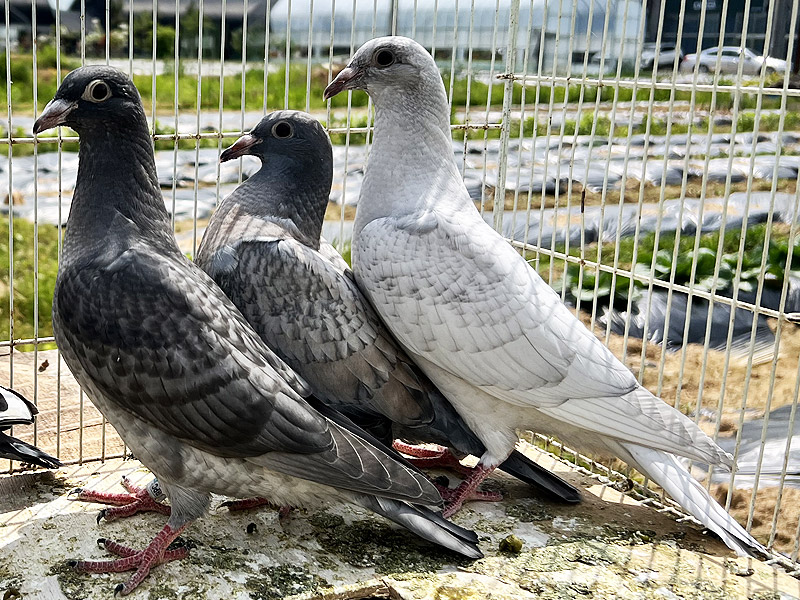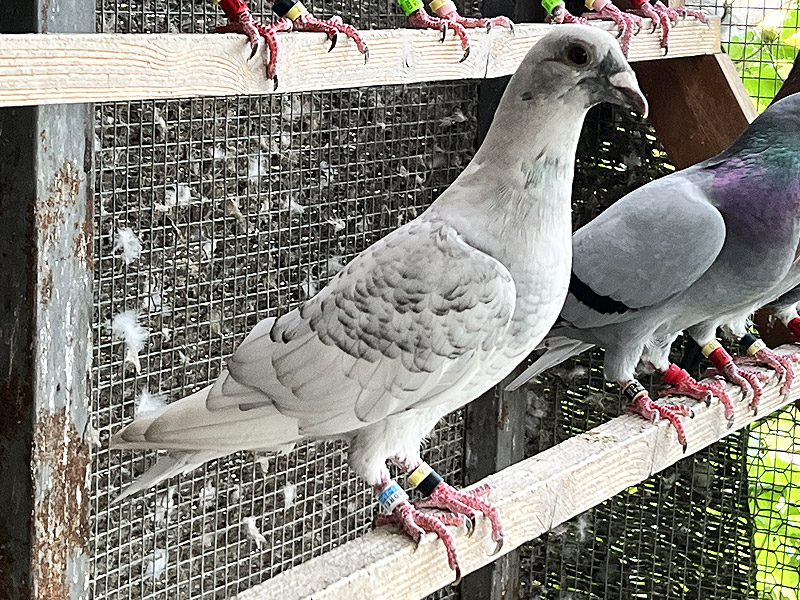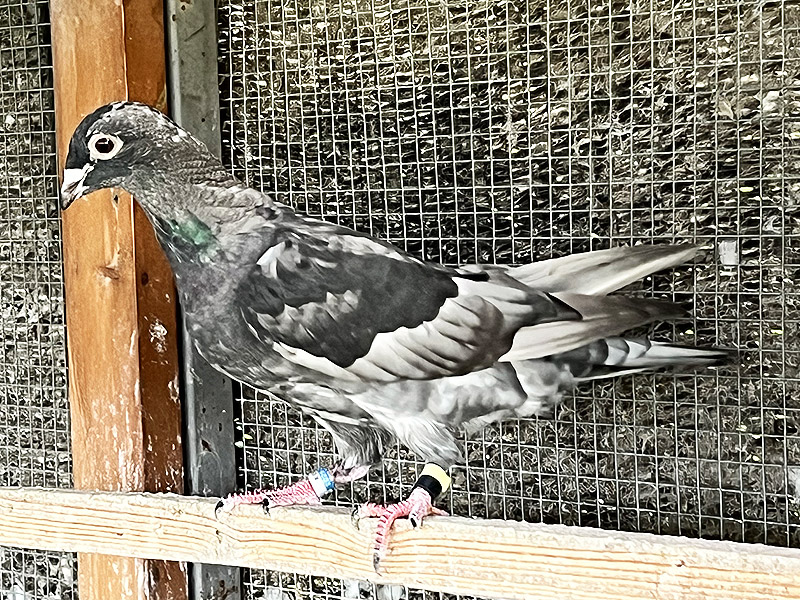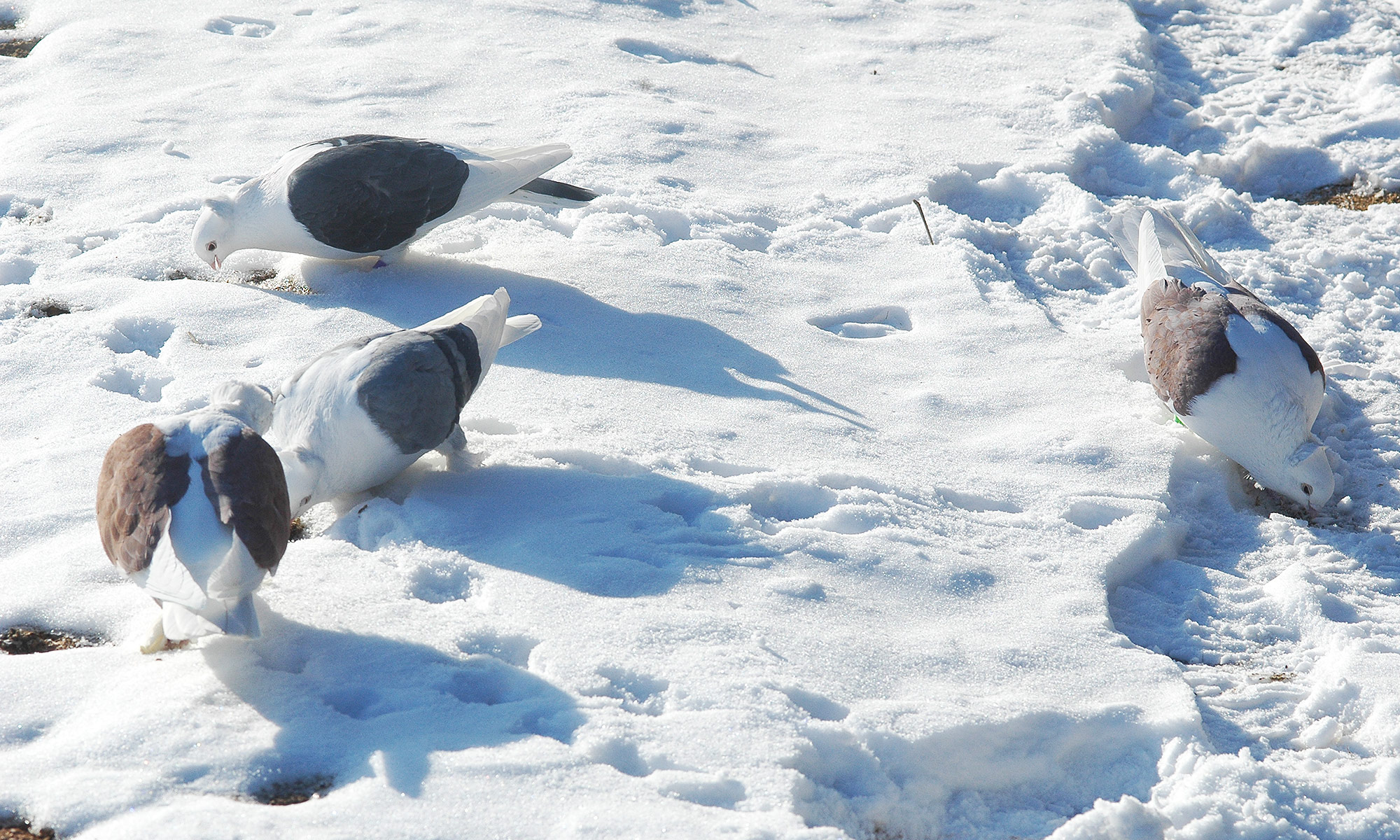
These offspring were produced by breeding a dominant opal pigeon carrying the spread gene. As seen in the photo, the chick in the center displays the typical dominant opal coloration, while the two on either side likely carry the spread gene.

The lighter-colored bird in the first photo is in the middle of its molt. Based on its bright plumage, I suspect it may be a spread-type dominant opal known as "white lace." I plan to continue photographing its molting process to observe the color changes over time.

The bird on the left in the first photo is the most intriguing. It's currently molting, and its changing coloration is so dramatic that it could be mistaken for an Andalusian. I’m eager to see how it turns out — it may be a spread-type dominant opal with the darkest, brownish tones I’ve seen so far.
For reference, dominant opals with double factors are considered semi-lethal and often have reduced lifespans. Therefore, breeders usually pair dominant opals with normal-colored birds. Among the offspring, the dominant opals can display a wide variety of color intensities. | 
